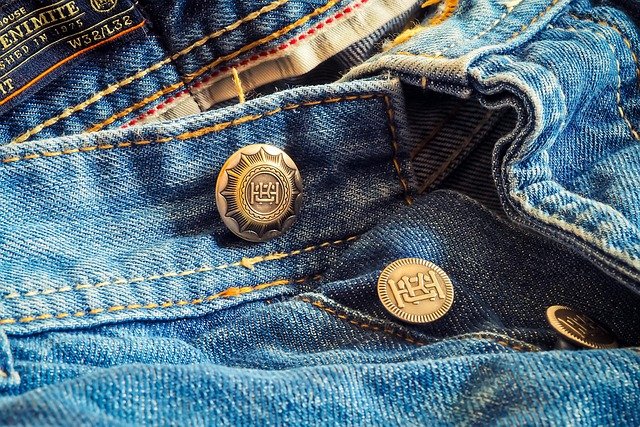Choosing the Right Coffee Machine for Your Shop: Features, Types, and Key Considerations
Selecting a coffee machine for a café or shop is more than just picking a brand—it’s about finding the perfect balance between quality, speed, and customer satisfaction. The right coffee machine can define the flavor, consistency, and efficiency of your business. This guide explains how commercial coffee machines work, the types available for different shop sizes, and what features to consider before investing. Whether you run a busy café or a small bakery, understanding your options will help you serve great coffee every time.

Running a successful coffee shop or café requires more than just quality beans and skilled baristas. The coffee machine you choose plays a central role in determining the speed, consistency, and quality of every cup you serve. With numerous options available, understanding the differences between machine types, the features that matter most, and the ongoing costs involved can help you make a decision that supports both your operational needs and financial goals.
Types of Coffee Machines for Shops
Commercial coffee machines come in several distinct categories, each designed to meet different service volumes and beverage styles. Espresso machines are the most common choice for cafés and coffee shops, available in manual, semi-automatic, automatic, and super-automatic models. Manual machines offer the most control but require skilled operators, while super-automatic machines handle grinding, dosing, brewing, and milk frothing with minimal intervention.
Drip coffee makers are ideal for high-volume settings where filter coffee is the primary offering. These machines brew large batches quickly and are simple to operate. Bean-to-cup machines grind fresh coffee for each serving and are popular in offices and self-service environments. Pod or capsule machines provide convenience and consistency but typically have higher per-cup costs and generate more waste. Understanding your service style, customer preferences, and daily volume will guide you toward the most suitable machine type.
Features to Look for in a Coffee Machine
When evaluating coffee machines, several features directly impact performance, efficiency, and beverage quality. Boiler capacity and type determine how quickly the machine can produce steam and hot water, which is crucial during peak hours. Dual-boiler systems allow simultaneous brewing and steaming, reducing wait times and improving workflow.
Programmability is another important consideration. Machines with programmable settings enable consistent shot volumes, temperatures, and extraction times, ensuring every cup meets your standards. Ease of use and interface design affect training time and operational efficiency, especially in busy environments. Look for machines with intuitive controls and clear displays.
Build quality and materials influence longevity and reliability. Stainless steel construction and commercial-grade components withstand heavy daily use. Additionally, consider the machine’s footprint and whether it fits comfortably in your workspace without obstructing workflow. Water filtration systems, cup warmers, and multiple group heads are features that can enhance both quality and service speed.
How Commercial Coffee Machines Work
Understanding the basic mechanics of commercial coffee machines helps in selecting the right model and troubleshooting issues. Espresso machines force hot water through finely ground coffee under high pressure, typically around 9 bars, extracting oils and flavors to create espresso. The process begins with water drawn from a reservoir or direct water line, heated in a boiler to the optimal temperature, usually between 90 and 96 degrees Celsius.
The group head, where the portafilter locks into place, maintains consistent temperature and pressure during extraction. Steam wands use pressurized steam from the boiler to heat and froth milk for cappuccinos and lattes. Automatic and super-automatic machines incorporate grinders, dosing mechanisms, and programmable controls to automate much of this process, while manual machines rely on the operator’s skill to control variables like grind size, tamping pressure, and extraction time.
Bean-to-cup machines integrate grinding and brewing into a single automated process, often using internal brewing chambers rather than portafilters. Drip machines work differently, using gravity to pass hot water through a bed of ground coffee, which then filters into a carafe or thermal container. Each machine type has distinct operational characteristics that affect maintenance needs and user skill requirements.
Maintenance and Cost Considerations
Owning a commercial coffee machine involves ongoing expenses beyond the initial purchase price. Regular maintenance is essential to ensure consistent performance and extend the machine’s lifespan. Daily cleaning tasks include flushing group heads, purging steam wands, and wiping down surfaces. Weekly backflushing with cleaning detergent removes coffee oils and residue from internal components.
Descaling should be performed regularly, depending on water hardness, to prevent mineral buildup that can damage heating elements and reduce efficiency. Professional servicing, typically recommended every six to twelve months, addresses deeper maintenance needs and identifies potential issues before they cause breakdowns. Replacement parts such as gaskets, seals, and shower screens are normal wear items that require periodic replacement.
Cost considerations extend to consumables like coffee, milk, cleaning supplies, and water filtration. Energy consumption varies by machine type and usage patterns, with larger machines and those maintaining constant boiler temperatures using more electricity. Training staff to operate and maintain equipment properly reduces waste and minimizes repair costs.
| Machine Type | Typical Price Range | Key Cost Factors |
|---|---|---|
| Manual Espresso Machine | 2,000 - 8,000 USD | Requires skilled operator, lower automation |
| Semi-Automatic Espresso Machine | 3,000 - 12,000 USD | Moderate automation, versatile |
| Super-Automatic Espresso Machine | 5,000 - 25,000 USD | High automation, built-in grinder, higher maintenance |
| Bean-to-Cup Machine | 2,500 - 15,000 USD | All-in-one convenience, moderate to high volume |
| Commercial Drip Coffee Maker | 500 - 3,000 USD | High volume, simple operation, lower per-cup cost |
| Pod or Capsule Machine | 300 - 2,500 USD | Convenience, higher per-cup cost, limited customization |
Prices, rates, or cost estimates mentioned in this article are based on the latest available information but may change over time. Independent research is advised before making financial decisions.
Making the Right Investment
Choosing a coffee machine for your shop is a significant investment that affects daily operations, customer satisfaction, and profitability. Start by assessing your expected volume, menu offerings, and available space. Consider whether you need the flexibility of manual control or the efficiency of automation. Factor in not only the purchase price but also installation costs, training requirements, and ongoing maintenance expenses.
Research reputable brands and suppliers, read reviews from other commercial users, and if possible, test machines before committing. Many suppliers offer demonstrations or trial periods. Ensure that the machine you choose has accessible service support and readily available replacement parts. A well-chosen coffee machine, properly maintained and operated, will serve your business reliably for years, delivering consistent quality that keeps customers returning.




